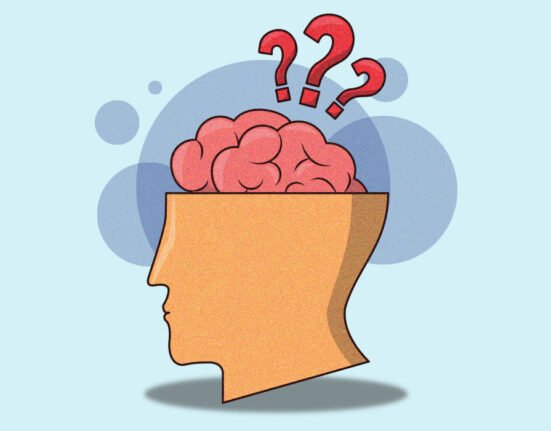Vaping has become a serious issue in recent times. It is the process of consuming nicotine in the form of e-cigarettes. These e-cigarettes are known by different names like e-hookahs, vape pens, vapes, etc. These are modern cigarettes that are designed to look like traditional cigarettes, cigars, pens, USB sticks, and other common household items. It comes in different shapes and sizes. Most of them have a battery, a heating element, and a place to store liquid. They generate an aerosol by heating a liquid containing nicotine that contributes to the aerosol’s formation. People breathe these aerosols into their lungs. Let us see how vaping affects mental health.
Understanding the Brain
Psychology is called the study of the mind. However, we can’t study the mind if we don’t understand the brain’s functioning. It is our brain that influences our behaviour how it does so, and which reasons are involved in it, studying all this is of utmost necessity. The major function of the brain is interpreting and storing information and sending orders to muscles, glands, and organs. Let us see various parts of the brain and their functions:-
The brain can be divided into three main parts which are as follows:
The Hindbrain: it includes the following:
- Pons: it influences sleep, dreaming, and arousal
- Cerebellum: controls all involuntary, rapid, fine motor movements.
- Medulla: controls life-sustaining functions like heartbeat, breathing, etc.
Limbic System: it includes the following:
- Amygdala: its major role is in responses to fear.
- Cingulate cortex: emotional and cognitive processing.
- Hippocampus: in forming long-term declarative memories.
- Thalamus: involved in the processing of sensory information.
- Hypothalamus: it helps in hunger, thirst, emotions, waking, sleeping, and regulating body temperature.
The Cortex: it includes the following:
- Left hemisphere: it helps in controlling the right side of the body.
- Right hemisphere: it helps in controlling the left side of the body.
Each cerebral hemisphere is divided into four lobes, each associated with different functions
- Parietal lobes: Located at the top of the brain, it involves somatosensory information( touch, pressure, temperature).
- Frontal lobe: located in front of the brain, involved in higher cognitive functions, contains the motor cortex and Brock’s area responsible for language production.
- Occipital Lobes: Located at the back of the brain, receive information from the eyes’ retina including assessing the size, depth, and distance, facial recognition colour Information, etc.
- Temporal lobe: located near the temples of the head, includes understanding, language, memory, face recognition, and auditory information processing, contains Wernicke’s area, essential for language development.
Exploring the link between Nicotine and Mental Well-Being
Nicotine enters the brain 10 seconds or less after a person smokes. Initially, nicotine elevates mood and enhances focus, lessens rage and tension, eases muscle tension, and suppresses appetite. When the supply of nicotine drops, regular dosages of nicotine cause changes in the brain that result in withdrawal symptoms. Since smoking momentarily lessens these withdrawal symptoms, it may help to strengthen the habit. Most smokers develop a nicotine dependence during this cycle. There is some proof that smoking is related to the very first frequency of an emotional well-being condition.
A systematic review found that daily tobacco use was associated with an increased risk of psychosis and an earlier age at the onset of psychotic illness. Still, the study was unable to determine a causal link. On the other hand, mental health conditions like anxiety and depression may be a factor in smoking initiation, although the evidence is inconsistent. Genetic vulnerability is also a major contributing factor to smoking behaviour.
Stress
Some individuals use smoking as a form of “self-medication” to reduce stress. On the other hand, studies have indicated that smoking worsens stress and anxiety. People who smoke believe that it helps in relieving their stress because it instantly relaxes them. However, this relaxation is temporary and is followed by withdrawal symptoms. While smoking lessens the symptoms of withdrawal, it does little to address the underlying causes of anxiety.
Depression
The likelihood of smoking in adults with depression is twice that of adults without depression. There is debate over whether smoking causes depression or vice versa; the majority of smokers begin before exhibiting symptoms of depression. There probably is a complicated relationship between the two. Dopamine is released in response to nicotine in the brain. Positive emotions are triggered by dopamine. It is frequently reported to be low in depressed individuals, who may then smoke to momentarily boost their dopamine levels. However smoking causes the brain’s dopamine-producing system to shut down, which eventually results in a lower supply and an increase in smoking.
Schizophrenia
Schizophrenia patients smoke three times as frequently as non-sufferers and typically smoke more severely. This is probably because smokers with schizophrenia tend to lessen the negative effects of their medications and control or manage some of the symptoms related to their illness. According to a recent study, smoking may raise your chance of getting schizophrenia.
Coping Strategies for Mental Health without Vaping
In our lives, we need to have various coping strategies to deal with difficult situations. And when it comes to fighting a drug, it becomes even more important. Coping strategies can help significantly in living a healthy nicotine-free life. It happens that people, often experience, withdrawal symptoms while treatment like headaches, irritability, mood swings, etc. However, these symptoms will subside with time as you dive deep into your treatment. Let us see, what strategies people can employ:-
- Exercising: It not only helps enhance our physical health but also releases happy hormones which help reduce stress.
- Identifying Triggers: identifying one’s triggers is very important to find the root cause of the problem. It differs from person to person and can be physical, social, or emotional.
- Deciding On Quitting: Knowing the reason behind quitting is very important. Is it because of some physical condition disturbed relationships or professional life? having clarity will help make an appropriate plan in moving forward.
- Building A Strategy For Withdrawal And Cravings: since the withdrawal symptoms are very severe. It is wise to have a strategy to cope with it. For example, breathing exercises, mindfulness, yoga, travelling, etc.
- Seek Support For Family And Friends: asking for support from your loved ones is always the right decision. They can provide help in behavioural terms( like not vaping around you) to emotional terms( appreciating you in your efforts) etc.
- Professional Help: It is always a wise decision to seek professional help. They can help you identify your triggers, provide you with coping mechanisms, manage emotions, and help in the development of new behaviours.
Emerging Research on Vaping and Psychological Impact
- It also has a significant impact on increased depressive symptoms among youth( Lechner et al.,2017)
- Javed and colleagues (Javed et al., 2022) found that suicide attempts were common among vape users when compared to non-users.
- A study conducted by Becker et al., 2021 showed effects on response to stress, increased negative emotional states, and increased anxiety.
- Adolescence is a demanding period of one’s life where the use of nicotine can severely impact cognitive development (Department of Health U, 2022).
- Recent reviews also demonstrated that vaping was associated with several mental health comorbidities including depression, suicidal ideation, anxiety, perceived stress, and disordered eating (Becker et al., 2021)
- A growing body of research regarding the effects of vaping on mental health is found to be associated with youth.(Becker et al., 2021, Becker et al., 2021, Javed et al., 2022).
In conclusion, vaping has become a serious problem for people today. It has been seen that people often move to these kinds of resorts to seek relief from their pain, however, it becomes very important to understand that life has many ups and downs, and we will often face difficult situations. One should always try to use constructive coping mechanisms instead of using these unhealthy ways. These can give us temporary peace but if we look from a long-term perspective, they have more disadvantages than benefits.
References +
- MSc, O. G. (2023b, November 9). Parts of the Brain: Anatomy, Structure & Functions. Simply Psychology. https://www.simplypsychology.org/anatomy-of-the-brain.html
- Ash. (n.d.). Smoking and Mental Health – ASH. ASH. https://ash.org.uk/resources/view/smoking-and-mental-health#:~:text=Research%20has%20shown%20that%20nicotine,memory%20in%20people%20with%20schizophrenia.&text=It%20may%20also%20be%20that,malfunction%20in%20people%20with%20schizophrenia.
- Raypole, C. (2023, October 17). Ready to ditch vaping? 9 tips for success. Healthline. https://www.healthline.com/health/how-to-quit-vaping#professional-support
- Wang, N., & Donaldson, C. D. (2023). Youth mental health and nicotine vape use: The moderating role of rural-urban/suburban school environments. Addictive Behaviors, 147, 107830. https://doi.org/10.1016/j.addbeh.2023.107830













Leave feedback about this